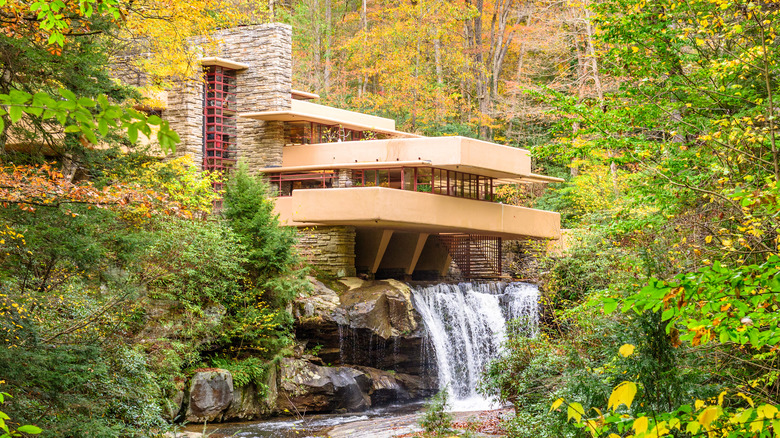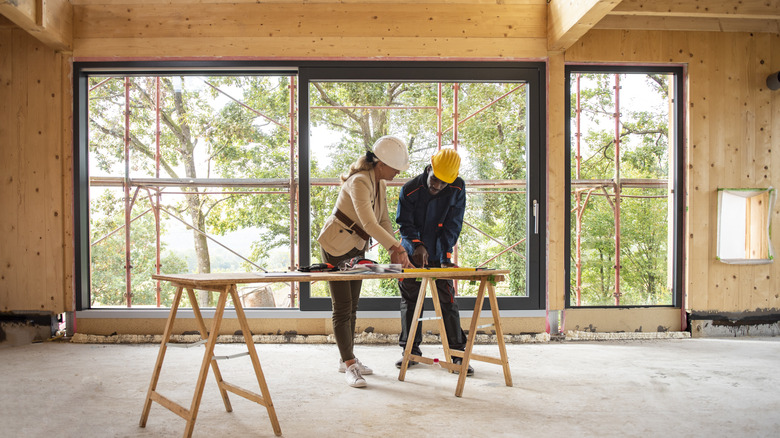Vernacular Architecture: Its Meaning And How To Incorporate It Into Your Home
Architecture isn't only about the features inside and outside a structure; it also reflects the history and culture of a certain area. Think of the Cape Cod and Dutch colonial homes of New England, the Spanish mission and hacienda structures of the Southwest, and the antebellum style seen in the South. Miles apart, these homes couldn't look more different from each other, but each still evokes a feeling from the region they exist — which brings us to vernacular architecture.
Vernacular architecture isn't a style that many people may know but have definitely seen. It is often responsible for the idiosyncratic looks of buildings and homes in particular areas. This type of architecture refers to a construction and building practice that uses materials sourced from the area in which the building is located, making the style both regional and hyper-local. While it isn't one exact style with certain features and techniques like Gothic, Mediterranean, or Tudor, vernacular architecture tells the story of the area and the time in which a structure is built.
The tradition of vernacular architecture
It can be assumed that many older buildings follow the building and construction tenets of vernacular architecture, as many homes and community spaces were most likely constructed with locally sourced timber, brick, and stone and built by local artisans. But as a term itself, "vernacular architecture" was first used in the 1800s. In many cases, these homes and builders were designed by non-professional architects using materials that were currently available. Because of this, at the time, "vernacular" was often used in a derogative way, as these structures weren't seen as properly built or designed.
However, over the years, that sentiment has changed. Many vernacular homes are now considered historical landmarks. For example, in Annapolis, Maryland, vernacular homes are marked by gray plaques to signify the preservation of this unique style. And while famed architect Frank Lloyd Wright is known for his innovations to the Prairie style, he sourced native sandstone and materials from the property to build the iconic Fallingwater home in southwestern Pennsylvania, which follows the vernacular architecture tenets.
Beyond sourcing local materials, vernacular architecture can also address cultural and environmental needs. Consider central courtyards popular in homes with hotter climates like the Middle East and the Mediterranean. These features are often associated with these architectural styles, but they also serve the purpose of helping to ventilate and cool a home in the summer. So, the popular feature also solves a problem specific to the area the home is built.
Contemporary vernacular architecture
In a more connected and modern world, vernacular architecture is no longer as commonplace as it once was. Materials can be sourced from across the country and around the world to build one home. And because of advancements in technology, there are other inventions that address basic needs like heat, cooling, and light. That means features like central courtyards are more decorative than functionally necessary. So, while there are still elements of traditional style, many new construction homes tend to have similar appearances.
Vernacular architecture is also naturally sustainable. Materials were sourced from nearby and weren't used in excess, allowing the home or building to co-exist with the natural environment. In a global world, contemporary vernacular architecture may look different, but it is possible. You can still use the basic principles to build or decorate a contemporary home.
If you're planning to build your home, do some research about where the materials are sourced from. If possible, find wood from local timber farms or stones from nearby mason quarries. Working with local companies and builders can also fall in line with vernacular architecture. Further, when designing your home, whether you've built or bought it, try to find décor that's made locally. Furniture made by craftsmen and art from local artists is often the more sustainable option. This unique way of designing your home can make you feel more connected to your community and be better for the environment.


